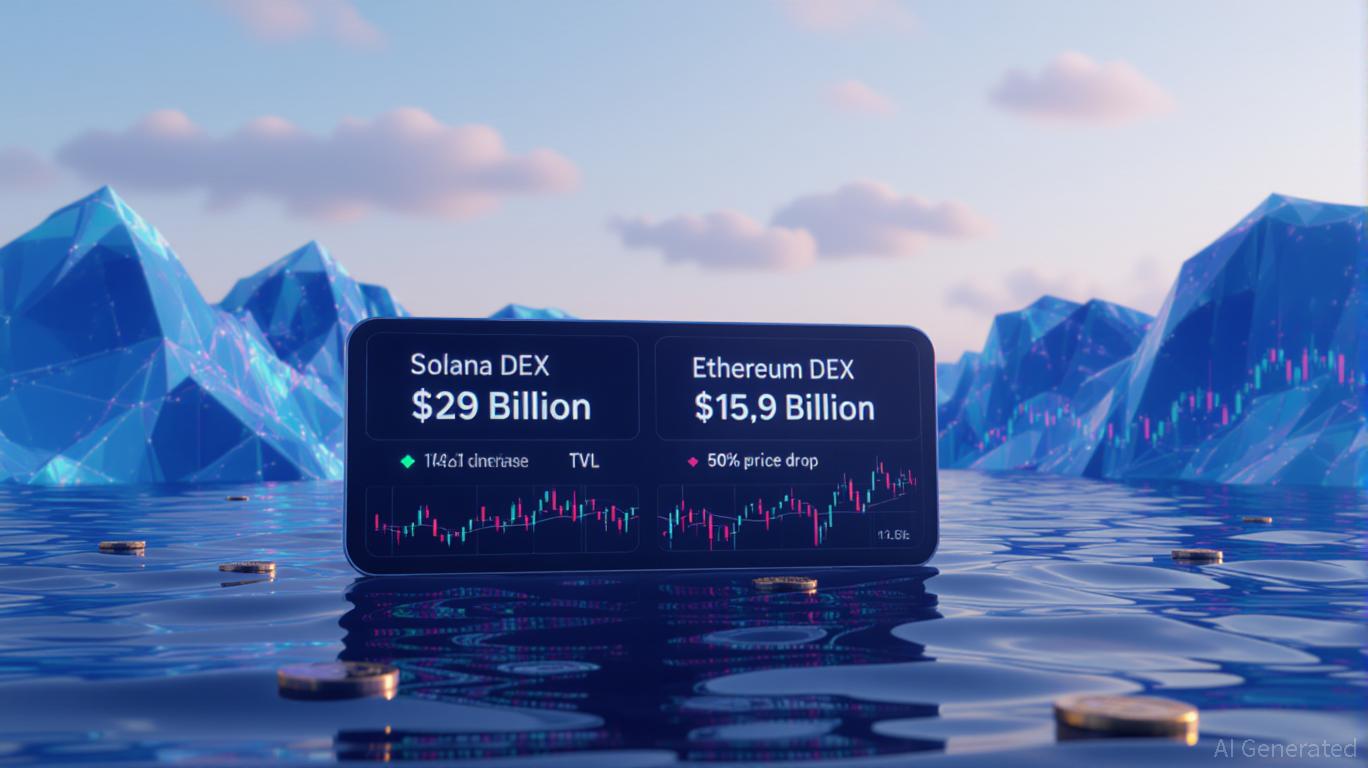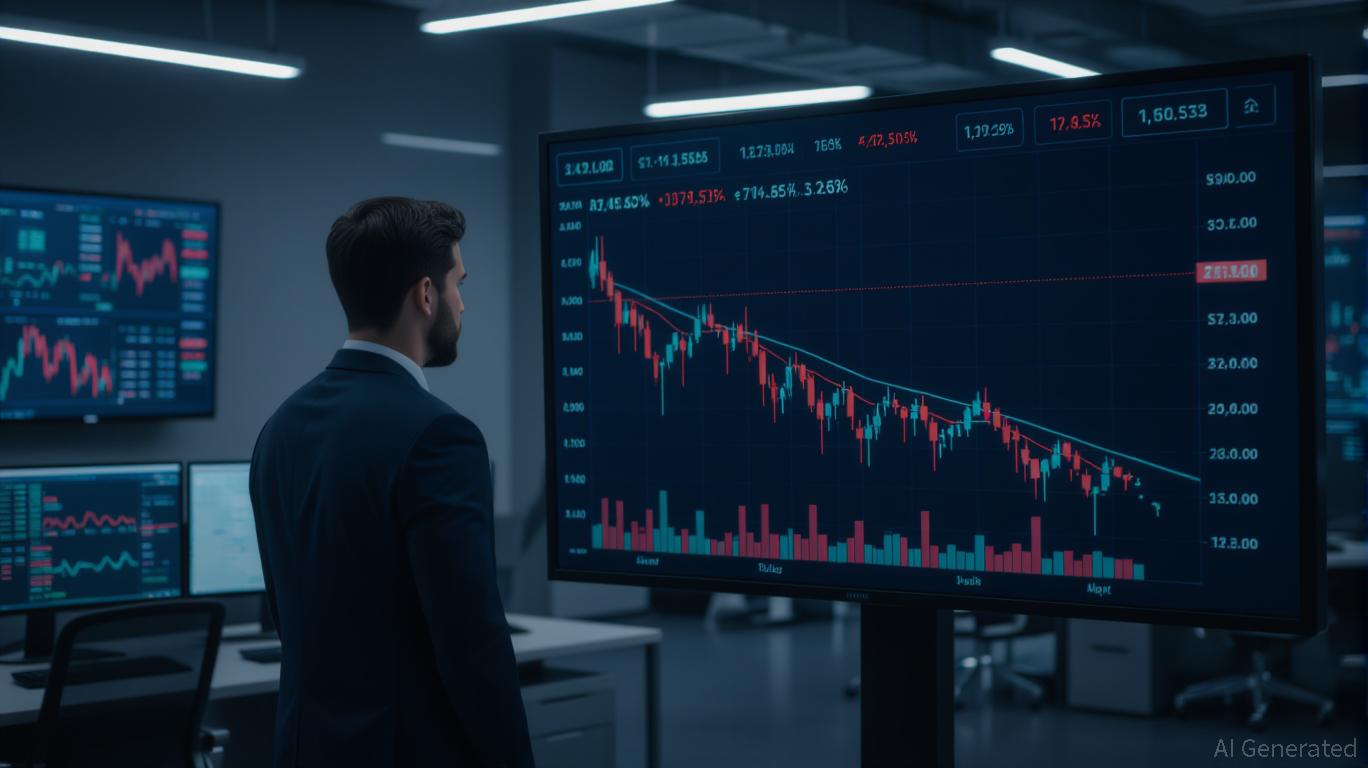The Emergence of Hyperliquid: Ushering in a New Age for On-Ramp Trading
- Hyperliquid dominates 73% of decentralized perpetual trading volume with $15B open interest, driven by on-chain liquidity innovations and retail-friendly strategies. - Its BorrowLendingProtocol (BLP) and HIP-3 framework decentralize market creation while integrating lending functions into DeFi, boosting HYPE token utility. - Institutional credibility grows via 21Shares' SEC ETF filing, but regulatory risks persist as the platform rejects VC funding to maintain self-sustaining governance. - Retail adoptio
On-Chain Liquidity: Hyperliquid's Core Innovation
Hyperliquid’s technical progress is grounded in its mission to make liquidity accessible to all. Through its Hypercore testnet, the platform launched the BorrowLendingProtocol (BLP), which lets users deposit, borrow, and withdraw assets such as
Hyperliquid’s integration of RedStone’s HyperStone oracle further strengthens its platform. The oracle delivers fast and reliable price data, which is essential for secure derivatives trading and appeals to both retail and institutional traders, as noted in the

Retail Growth: Making DeFi More Accessible
Hyperliquid’s approach to attracting retail users is as ambitious as its technical developments. The introduction of USDH, a stablecoin backed by fiat and pegged to the US dollar, is a standout example. By capturing stablecoin-related earnings that would otherwise go to outside issuers, Hyperliquid creates a self-reinforcing cycle: USDH’s use brings in reserve interest, which is then funneled back into HYPE and the broader ecosystem, as explained in a
Retail participation is further supported by Hyperliquid’s no-KYC requirement and low trading fees (0.015% for makers, 0.045% for takers), according to the
Hyperliquid’s strategy for onboarding users is also noteworthy. While it does not have direct relationships with fiat on-ramp providers like Ramp or Moonpay, it benefits from industry-wide progress, such as the Mastercard–Gemini–WebBank–Ripple RLUSD Settlement Pilot, as mentioned in the
Institutional Support: Affirming the Platform’s Vision
Hyperliquid’s standing among institutions has been strengthened by 21Shares’ SEC filing for a Hyperliquid ETF, highlighting the platform’s increasing relevance in regulated financial markets, according to a
Founder Jeff Yan has intentionally declined venture capital investment to maintain decentralization, according to the
What This Means for Investors
For those considering investment, Hyperliquid stands at the crossroads of DeFi advancement and retail-driven momentum. Its TVL and trading volumes indicate that it is a major player in the derivatives market, not just a niche project. Nonetheless, there are significant risks. The platform’s dependence on the HYPE token means that a drop in staking or trading could negatively impact its value. Furthermore, the SEC’s uncertain position on crypto ETFs could slow institutional growth if 21Shares’ application is denied.
Even so, the overall market environment is favorable for Hyperliquid. The appetite for regulated altcoin investment is rising, and Hyperliquid’s blend of decentralized governance with robust infrastructure puts it in a strong position to capture this demand. For investors with a medium-term outlook, the platform’s emphasis on sustainable growth and ecosystem value makes it an attractive option.
Conclusion
Hyperliquid’s ascent signals a new chapter in DeFi, where innovations in on-chain liquidity and user accessibility are reshaping the financial landscape. By focusing on user experience, forging strategic alliances, and earning institutional trust, Hyperliquid has established itself as a distinctive force in the crypto world. For investors, the main consideration is not whether Hyperliquid will thrive, but how rapidly it can expand its vision while staying true to its decentralized principles.
Disclaimer: The content of this article solely reflects the author's opinion and does not represent the platform in any capacity. This article is not intended to serve as a reference for making investment decisions.
You may also like
Why the Latest 50% Decline in SOL Price Presents a Prime Chance to Reenter
- Solana's 50% price drop reflects broader market pressures but highlights structural strengths like institutional adoption and DeFi innovation. - Robust on-chain metrics show $29B DEX volume and $10.3B TVL, outperforming Ethereum despite stablecoin depegging challenges. - U.S. Solana ETFs attracted $200M+ inflows, signaling institutional confidence in long-term value despite crypto market volatility. - Bullish social sentiment and Solana 2.0 upgrades position it to weather "altcoin winter," creating asymm

Bitcoin Leverage Liquidations Spike in November 2025: Systemic Threats and Institutional Portfolio Adjustment Approaches
- November 2025 Bitcoin price drops triggered $1.27B long-position liquidations and $250M short-position collapses, exposing crypto derivatives market fragility. - Regulatory shifts (CFTC's leveraged spot trading plans) and U.S.-China tensions amplified volatility, forcing traders to reposition amid opaque risk management. - DeFi protocols like Euler and Balancer faced $1.3B+ liquidations, while institutions adopted advanced hedging via derivatives and AI-driven rebalancing strategies. - Experts warn of sy

Bitcoin Price Outlook for November 2025: Global Portfolios Transformed by Macroeconomic Changes and Growing Institutional Involvement
- Bitcoin surged 8% in Q3 2025 to $114,600 amid Fed rate cuts and geopolitical tensions, solidifying its role as a digital safe-haven asset. - Institutional adoption accelerated, with $9.6B in Ether ETF inflows and JPMorgan boosting Bitcoin holdings via BlackRock's trust. - Corporate reserves reached record levels (e.g., MicroStrategy's $70B BTC), while altcoin ETF applications signaled maturing crypto markets. - Bitcoin's portfolio role evolved from speculative exposure to strategic allocation, outperform

YFI Falls 37.57% Over the Year Despite 6% Surge in the Past Month
- YFI fell 0.34% in 24 hours to $5011, contrasting a 11.85% weekly gain and 6% monthly rise amid a 37.57% annual decline. - Recent volatility reflects broader market swings and investor sentiment, highlighting YFI's sensitivity to short-term shifts. - Technical indicators show mixed signals, with narrowing moving averages and RSI in mid-range, indicating a consolidating market. - A backtesting strategy examines historical YFI performance after 37.57% annual declines to assess post-drop recovery patterns.